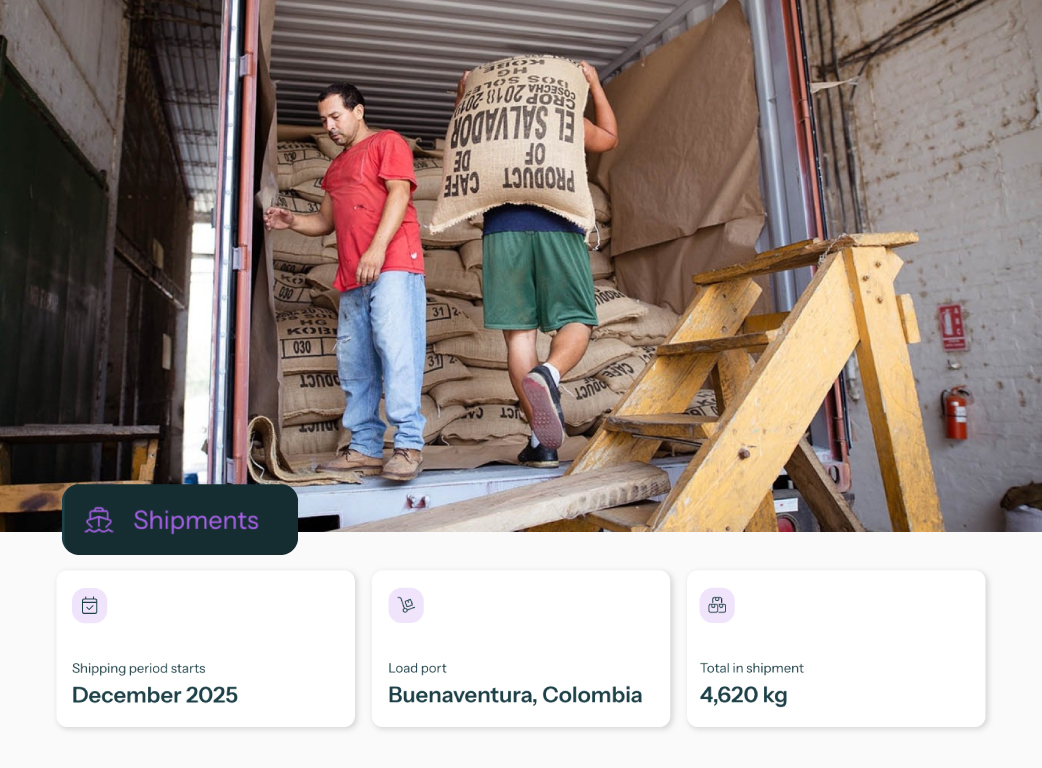What is dynamic pricing?
When a producer creates a dynamic offer on Algrano, the base price is set according to the current contract from ICE and the differential chosen by the producer. Should the market price drop suddenly, there is a price floor setting that acts as a fail-safe.
If the ICE price closes today at 2.45 USD/lb (or 5.40 USD/kg), the producer sets a differential of 0.2 USD/lb (or 0.44 USD/kg) on top. Today, he/she would get 2.65 USD/lb (or 5.84 USD/kg). If the market goes to 2.20 USD/lb tomorrow, the producer would then get 2.40 USD/lb (or 5.29 USD/kg).
Dynamic pricing is especially important for roasters and producers in volatile market conditions like the one we’re going through now. It prevents inaccurate pricing of standard volume lots and allows producers to keep offers up to date with minimum effort.

Why do some producers price specialty lots on differentials?
Not all volume lots are priced on differentials currently as pricing strategies vary across different supply chains. While a single farm or estate can easily offer a fixed price based on production costs and margins, a cooperative or an exporter buying coffee from other farms might need flexibility as local market dynamics change.
An aggregator will usually adopt differential or dynamic pricing when they buy coffee from farms throughout the season as they receive contracts. No farmer is obliged to sell coffee to an organisation they partner with. If the ICE market price rises, they want a price that reflects that market increase.

A cooperative wouldn’t remain competitive and offer a higher price to a farmer if their lots were not sold at a price linked to the exchange price.
If a cooperative is more capitalised and able to buy stock before offers are created, they’ll usually be able to fix an FOB price for buyers. A cooperative may also purchase coffee before a contract and sell on differentials.
Why did Arabica and Robusta prices rise so much so fast?
This week, Arabica prices reached a 2-year high while Robusta prices went to record highs. Robusta prices have been increasing over the past year, with Vietnam’s output reduced by drought and demand for Brazilian Conilon going to unprecedented levels. Arabica prices were relatively stable during the first quarter of 2024 and started to climb in April.

Specialised news outlets have been tracking the myriad of factors related to the price increases - not only in coffee but across multiple commodities.
On a macro level, conflicts in the Red Sea affecting the Suez Canal create fears of supply chain disruptions for goods moving from Asia to Europe. Vessels are already taking a much longer route around the Cape of Good Hope, slowing deliveries.
As the deadline for the EUDR approaches, buyers of different commodities have also increased imports to build reserves before the new rules kick in.
On a coffee level, a tight Robusta market is a huge supportive factor. ICE-certified stocks started to recover but remain low, with EUDR concerns adding pressure to build the volumes and pushing a 35% increase in exports from Brazil in the first quarter.
Reduced rainfall in Brazil at the bean-filling stage - also seen in certain African and Central American countries - creates concerns around the 2024/2025 harvest.

Fundamentals or speculation?
From speaking to producers and looking at certain market indicators, none of these factors justify the recent price hike. They are supportive and would likely keep exchange prices higher than in previous years, but the sudden 2-year peak is not driven by physical coffee.
Brazil’s crop is expected to grow 5,5% to nearly 60 million bags. Colombia’s production is recovering; the FNC predicts a 15% volume increase from last year. The ICO (International Coffee Organization) reported an expected surplus of 1 million bags in the crop year 2023/24. Certified stocks have recovered from an obscure period of low volume in 2023, which drove ICE not to share stock numbers for a while.
Fund buying and speculation seem to be the main culprits of the sudden price spike, with investors betting on supply shortages - mainly on the Robusta market - and reinforcing a bullish trend.
Fund activity is quick to react to macroeconomic changes and Thursday already gave signs of investors selling their positions. This promises to be a volatile market, settling only when Brazil starts harvesting and the numbers coming from Brazil become more solid.



.png)
